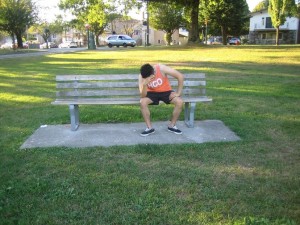Headaches are said to be the most common form of pain that one experiences. Most people have experienced headaches at least once in their lives. Headache is pain or discomfort felt either in the head, scalp or neck. The brain itself does not have nerves, thus it does not experience pain. Thus the pain originates from the tissues and other structures surrounding the brain, usually as a result of inflammation or irritation of the tissues. The pain from headaches can be described as dull, sharp, constant, radiating, throbbing, mild, intense, and plenty of other ways. But symptoms for headaches will vary according to its cause
Headaches are either classified as primary or secondary. Headaches are classified according to their underlying cause. The aim of this classification scheme is to easily eliminate potential causes. This could lead to giving a faster diagnosis and therefore giving proper medications at the soonest possible time.
Primary Headaches
Primary headaches are the most common types of headaches. The source of pain here is from tissue inflammation in the head. There are three known types:
- Tension (most common type)
- Exact cause is still undetermined but is hypothesized to be due to the contraction of the muscles that cover the skull resulting to inflammation
- Possible causes: stress, depression, anxiety, bad posture, etc.
- More common in women than men
- Pain usually begins at the back of the head or upper neck and radiates to encircle the head
- Pain is most intense over the temples or over the eyebrows
- Pain is on both sides
- Migraine (second most common)
- Exact cause is still undetermined
- Possible triggers: heat, lack of sleep, certain scents, caffeine withdrawal, etc.
- More common in women than men
- Pain is described as severe, throbbing or pounding and usually occurs in one side only
- May be accompanied by change in vision and nausea
- Cluster (rare type)
- Exact cause is still undetermined but is hypothesized to be due to the sudden release of serotonin and/or histamine
- May be genetic
- More common in men than women
- Pain is described as severe and usually occurs once or twice a day and typically lasts from 30 to 90 minutes
- May happen daily for a week or longer and usually happens at the same time every day
- May be accompanied by the reddening, inflammation and watering of the eyes
Secondary Headaches
Secondary headaches are caused by an underlying health or medical condition, which include:
- Strokes
- Transient ischemic attack
- Seizures
- Brain tumors
- Encephalitis, meningitis and other infections that involve the brain
- Traumatic headaches
- Hypertension
- Dehydration
- Substance abuse
Cranial Neuralgias Headaches
- Inflammation of the one of the 12 cranial nerves
- Symptoms: severe facial pain, etc.
First Aid Treatment and Management for Headaches

Headaches can usually be treated with over-the-counter pain relievers, such as paracetamol, ibuprofen and aspirin. Aspirin should not be given to children. Doctors may prescribed pain medications for severe headaches. The following treatment can also be done to help manage headaches:
- Apply a cool compress over the forehead.
- Take plenty of rest and if possible, do this in a dark room.
- Do not join activities that may worsen the headache.
- Do not stay in stressful environments.
- Stay hydrated by drinking plenty of clear fluids, such as water.
Enroll in First Aid Courses to learn more about how to handle pain.
Headache is a pain or discomfort that is felt either in the head, scalp or even in the neck. They have a wide variety of causes.
